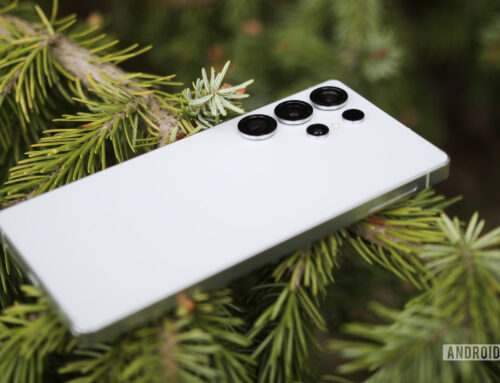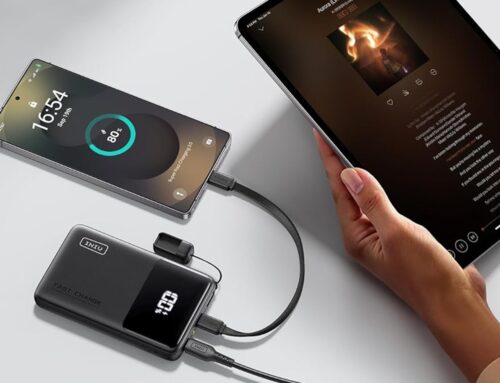![]()
Back when Google unveiled the Nexus 7, plenty have argued that by aggressively pricing a mid-range tablet, the search engine giant had strangled every other Android tablet manufacturer out there. After all, Android OEMs have literally nothing to gain if they sell their products at cost, or even at a loss, like Google can. Sales numbers confirm this!
But then out comes the Acer Iconia Tab A110, proving that the Nexus 7 did not crush the budget Android tablet market, but made it more competitive. By leading by example, Google managed to set a new standard for the entire market, at a time when a quality boost was needed in order to make Android an attractive tablet platform for both consumers and developers (two equally essential groups).
How does the Acer Iconia Tab A110 fair against the Nexus 7? Like with most devices, it depends. But it’s surprisingly interesting to see that the lowkey Iconia Tab A110 is a worthy competitor to the most successful Android tablet ever.
Display
The display on the Nexus 7 is considered by many reviewers the best thing about the reference Android tablet. Seven inches of LED-backlit IPS LCD goodness, running at a 800 x 1280 pixel resolution, amount for an awesome viewing experience, especially at this price point. With a 16:10 aspect ratio, the PPI ratio rests at 216, a bit behind Retina territory and right on par with the 2012 Kindle Fire HD.

The Acer Iconia Tab features a 7-inch display that powers up 1024 by 600 pixels, a resolution that translates into an odd aspect ratio of 128:75 (somewhere in between 16:9 and 16:10). Its PPI ratio of 170 means puts it right above the iPad Mini (although, in all fairness, the iPad Mini has an overall better display) and right on par with the 2011 Amazon Kindle Fire. Overall, the Acer Iconia Tab A110 should make for a decent viewing experience, one that is comparable to what Android tablets had to offer about a year ago.
Unfortunately for the Iconia Tab A110, Google’s Nexus tablet has clearly raised the bar when it comes to display quality.
Verdict: The Google Nexus 7 wins this round with ease
Build Quality and Design
To complete the aesthetics section of the battle, it is now time to judge the design and build quality of the two contenders.
The Google Nexus 7 measures 198.5 x 120 x 10.5 mm (7.81 x 4.72 x 0.41 in) and weighs 340 g (11.99 oz), meaning that it is thinner, narrower, lighter but taller than the Iconia Tab A110. Acer’s tablet measures 193 x 126.5 x 11.4 mm (7.60 x 4.98 x 0.45 in) and weighs 390 g (13.76 oz).

Overall, the Nexus 7 has less bezel surrounding the display (30% thinner on the sides, but 20% thicker at the top and bottom) and and it’s overall better designed than the Acer Iconia Tab A110. This shouldn’t be a deal-breaker though!
As far as build quality is concerned, we’ll have to wait before we get to properly handle the Iconia Tab A110, but judging from previous Acer quality designs as well as the press photos, the difference should’t be overwhelming.
Verdict: A matter of personal preference
Hardware
Ok, now for the juicy hardware part! For starters, both the Iconia Tab A110 and the Google Nexus 7 make use of the same Nvidia Tegra T30L SoC, one that encapsulates a 1.2 GHz quad-core (1.3GHz when in single-core mode) ARM A9 processor and a GForce ULP graphical unit clocked at 416MHz.
With the Iconia Tab A110 using a lower resolution display, one would expect the overall experience to be smoother than it is on the Nexus 7, at least on the graphical side. However, it looks like that is not the case, as a few benchmark reveal the Nexus 7 sticking alongside the A110 in a series of CPU and GPU tests. This is most likely due to the fact that the Iconia Tab A110 is not running stock Android, but more on that later.
Although both the Nexus 7 and the Iconia Tab A110 lack a rear camera, both devices have front facing ones — the Acer A110 uses a 2MP , while the Nexus 7 uses a 1.2 MP sensor. Use them for video-calling, but don’t expect too much of a quality broadcast!
On to the battery, the Nexus 7 carries 4320mAh, while the Iconia Tab A110 battery has a capacity of 3420mAh. Here, the efficient design of the Nexus 7 reveals itself once more — Google’s tablet is thinner but packs a bigger battery. While the lower resolution display might help reduce power consumption on the Iconia Tab A110, it doesn’t offset such an underpowered battery. Let me know if I’m too much of a freak for battery life, okay?
Now, when talking about the Nexus 7 (and all Nexus devices for the matter), plenty argue that the lack of a microSD card support is a disappointment. For many users, popping in an SD card to transfer data or to extend internal storage is a must have feature. If that’s you, the Iconia Tab might allure you with its microSD card slot. However, Google has recently updated the Nexus 7 with more internal storage and added 3G connectivity, making the lack of extendable storage more palatable.
As far as Wi-Fi-only prices are concerned, the ASUS-manufactured Google Nexus 7 costs $199 in its 16GB version and $249 in its 32GB version. In the opposite corner, the 8GB Wi-Fi-only Acer Iconia Tab A110 is priced at $220.
While there is no A110 with 3G support, the Google Nexus 7 32GB version also comes with 3G connectivity for a price of $299. Take it or leave it, but it’s always nice to have that option.
Operating System
Originally launched with Android 4.1 Jelly Bean, the Google Nexus 7 was recently updated to run Android 4.2 (also called Jelly Bean). As with all Nexus devices, the Nexus 7 is running stock Android, widely considered the best Android UI out there.
While it’s interesting that Acer was quite fast to implement Android 4.1 Jelly Bean on the A110, it will definitely take some while for the Iconia Tab A110 to get its bump to Android 4.2. In this particular case, you are not missing out much, but it’s worth noting that the Nexus 7 will keep getting fast OS updates for the foreseeable future.
While the custom skin that Acer has designed for the Iconia Tab A110 isn’t really all that different from vanilla Android, I’m sure that even these minor differences will get in the way of fast OS updates. In addition, I can’t help thinking that this is why the Nexus 7 fared better in GPU tests, even though it has to display more than 60 percent more pixels.
Verdict: Nexus devices are always the superior choice when it comes to OS, and the Nexus 7 makes no difference.
Pros and Cons
Google Nexus 7 Pros
- Better display with higher resolution
- 3G connectivity option
- Stock Android (the Nexus 7 will be among the first devices to be upgraded to future Android versions)
Google Nexus 7 Cons
- No SD card slot
Acer Iconia Tab A110 Pros
- SD card slot
Acer Iconia Tab A110 Cons
- Low resolution display
- Custom UI from Acer
- No 3G option
- Slightly more expensive
Conclusion
It looks like the Google Nexus 7 is still the leader in the 7-inch Android tablet market, although it is good to see that there are manufacturers that are willing and able to complete against the Nexus 7.
If Acer would have released the Iconia Tab A110 earlier in the year, it would have had a better shot at threatening Google’s Nexus 7, given that SD cards are crucial for many people.
However, Google has updated the storage capacity on its Nexus 7 line, while keeping the same prices as before. For $250, you can either get an Iconia Tab with 8GB internal storage and a 32GB SD card, or the Nexus 7 with 32GB of internal storage. The way I see things, I would choose the Nexus 7′s stock Android and better display over the 8GB storage difference.
However, feel free to let us know which one of these two 7-inch tablets is better for you! Drop a comment in the section below and make yourself heard!







Leave A Comment